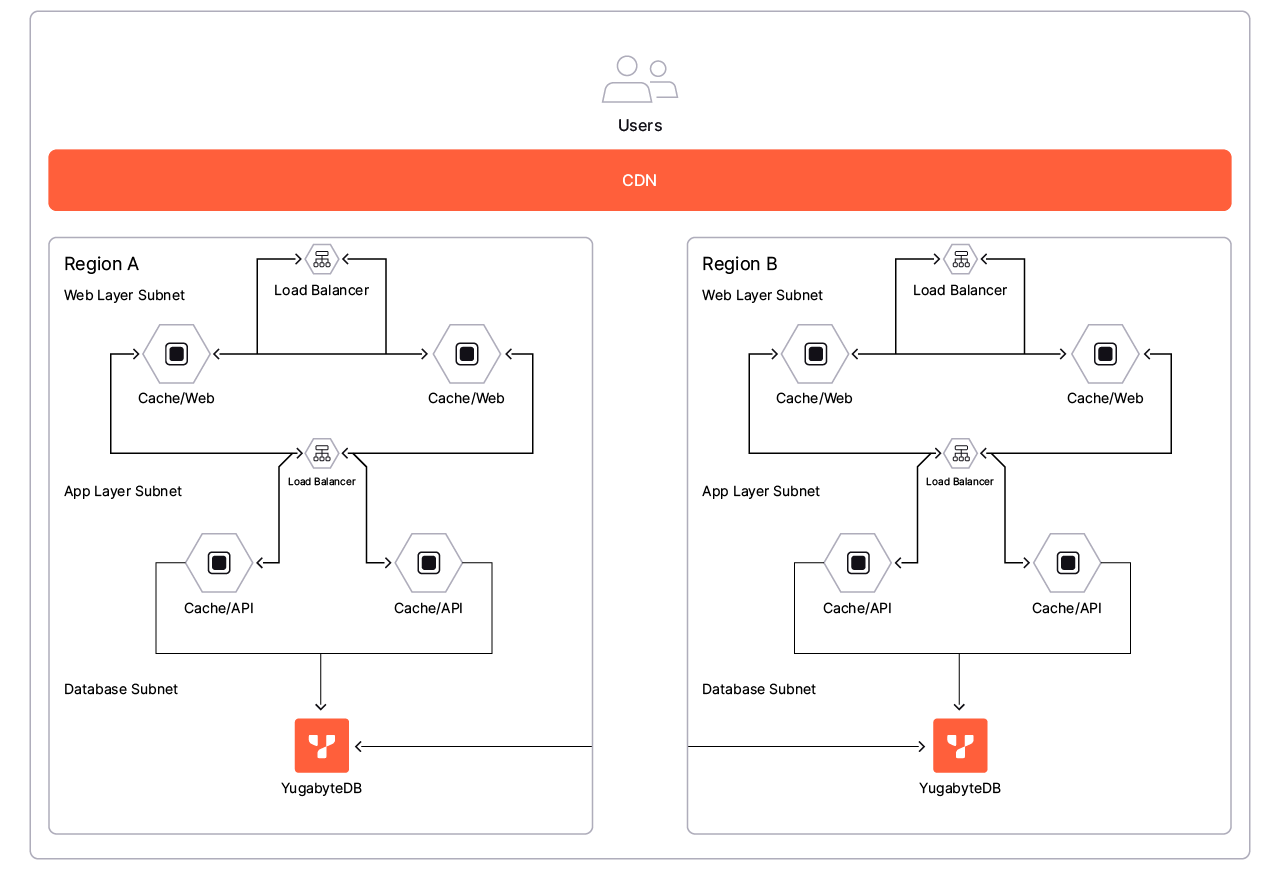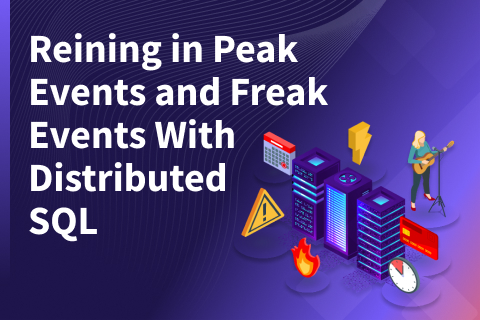Touchdown! Paramount+’s Record-Setting “Big Game” Live Stream with YugabyteDB
Paramount+ shattered records this NFL season! Did you know that the Super Bowl this year was the most-streamed live event? But what does that mean? As we await final numbers, let’s examine the viewership stats Paramount+ shared in the days leading up to the Super Bowl.
- The NFL ON CBS scored the most-watched AFC Championship Game ever, with an average of 55.473 million viewers, surpassing the previous record of 54.850 million viewers for the Jets-Steelers game (in the late window from 6:42-9:54 PM, ET) on Jan. 23, 2011.
- An audience of 50+ million viewers during two consecutive NFL weekends.
- The January 28th game was CBS’s most-watched non-Super Bowl broadcast in 30 years, dating all the way back to the 1994 Winter Olympics.
The task of designing a system to support such massive viewership levels demands a fundamentally scalable, robust, and resilient architecture. It’s both humbling and a source of pride for Yugabyte to have contributed to the Paramount+ solution designed to meet such a demanding set of requirements.
Providing all the details would require authoring a mini ebook, but I will attempt to summarize how YugabyteDB played a part in Paramount’s overall solution.
Streaming Growth Requires Database Scale, Performance, and Availability
Paramount+’s user base expanded from 16.5 million in March 2021 to 63.4 million in September 2023, marking a nearly 4x increase in both user numbers and their activity levels across the web and mobile app. User activities are almost too numerous to name but include login attempts and account updates, as well as content access and live streaming.
Right before major events (like the Super Bowl), every layer and component of the overall system faces immense pressure from the extremely high number of concurrent users hitting and stressing the different layers of the infrastructure. Predicting the number of requests that impact the database layer is notoriously difficult; most databases are not designed to scale during spikes and scale back down as things return to normal.
This is where YugabyteDB comes to the rescue. Because horizontal scaling is part of YugabyteDB’s DNA, you can start small and then scale up and down as needed. YugabyteDB goes beyond the common misconception that scaling means making more space for ever-growing data sets. That’s often not the case. More end users could mean more connections to the backend database or more reads and writes or a combination of both!!
Most importantly, in the 24/7/365 world of streaming there simply can not be any downtime which makes availability another key requirement.
Exceptional User Experience with a Multi-Region Architecture with Data Locality
Your users could be anywhere, so you have to assume they might log in from any part of the world where there is internet connectivity. Therefore, data access must be fast to perform login authentication and entitlement lookups quickly. Reducing read and write latencies means that data must be in close proximity to users. This was made possible by deploying YugabyteDB across multiple cloud regions, which again is very much a core part of YugabyteDB’s architecture.
Large enterprises often begin with an implementation of a single cloud region or one data center architecture. Then they face significant challenges as their user base quadruples and there is not enough time to scale or redesign systems. If your services are stateless or can easily scale, there is less of a problem. But you are still left with the difficult issue of scaling the database layer. Fortunately for Paramount+, when the need arose, YugabyteDB seamlessly scaled across three Google Cloud (GCP) regions, and they were well-positioned to handle huge spikes in viewer traffic during the Super Bowl. This would not have been possible with traditional monolithic databases. Well, maybe it is possible, but it would take huge investments in additional replication and observability technologies — and a much larger operations team.
The picture below partially represents the deployment topology that includes YugabyteDB, as detailed in Shiva Paranandi’s blog post at Paramount+.

To address the database issue, Paramount+ established some objectives for a new multi-region setup.
- Users should never worry about which region they’re accessing; all regions should be homogenous. While some exceptions for background jobs or specific corner cases might arise, user-facing operations should seamlessly scale across multiple regions.
- There should be no direct communication across regions except for replication.
- There could be no downtime or data loss during the actual migration, which is critical given their extensive user base and the fact that streaming is a 24/7/365 operation.
- Security policies should be implemented uniformly in all regions, with consistent auditing and monitoring.
Rapid Modernization with PostgreSQL Compatibility
To share a bit more background, Paramount+’s goal was to enhance their critical (Tier 1) application with a more robust, powerful, and flexible tech stack. They did not want to rewrite it. They prioritized quick innovation and a high-performance, scalable, and highly available database.
Switching to stateless, horizontally scalable microservices greatly benefited the migration process, allowing them to focus instead on optimizing the database and object-relational mapping (ORM) layers. The ORM layer had to work seamlessly with both the legacy and YugabyteDB databases, allowing them to switch back and forth as needed until the legacy database could be decommissioned. This is much harder to accomplish than a rip-and-replace approach, and it is certainly a topic for further discussion in a blog post or webinar—let me know if you’d like that!
It Takes a Village, and Yugabyte is Proud to be a Part of It!

Shiva Paranandi, the SVP of Infrastructure and Cloud Advancement at Paramount+ was the real quarterback in this game. The amount of coordination and effort that went into everything behind the scenes deserves its own more detailed blog post! We played a small part, so thank you to Shiva and the Paramount+ team for allowing us to join you to collaborate all day and all night for the past 36 hours!

The Yugabyte team with Alan Caldera, Shawn Sherwood, and Eugene Kim were with our partners, the Paramount+ tech team, in their SFO and NYC war rooms to ensure there was adequate support for anything backend-related. Many Congratulations to Shiva and the extended Paramount+ team!
Learn How to Build for Super Bowl Scale
Want to learn what it takes to build massively scalable, resilient, multi-region applications on a global data architecture? Sign up for our upcoming live hands-on webinar!

Building Your Multi-Region App for Super Bowl-Level Scale
Learn to build massively scalable, resilient, multi-region apps on a global data architecture. Examine real-world database scaling and replication challenges and see how industry leaders (like Paramount+) solve these challenges using global design patterns and distributed PostgreSQL.


